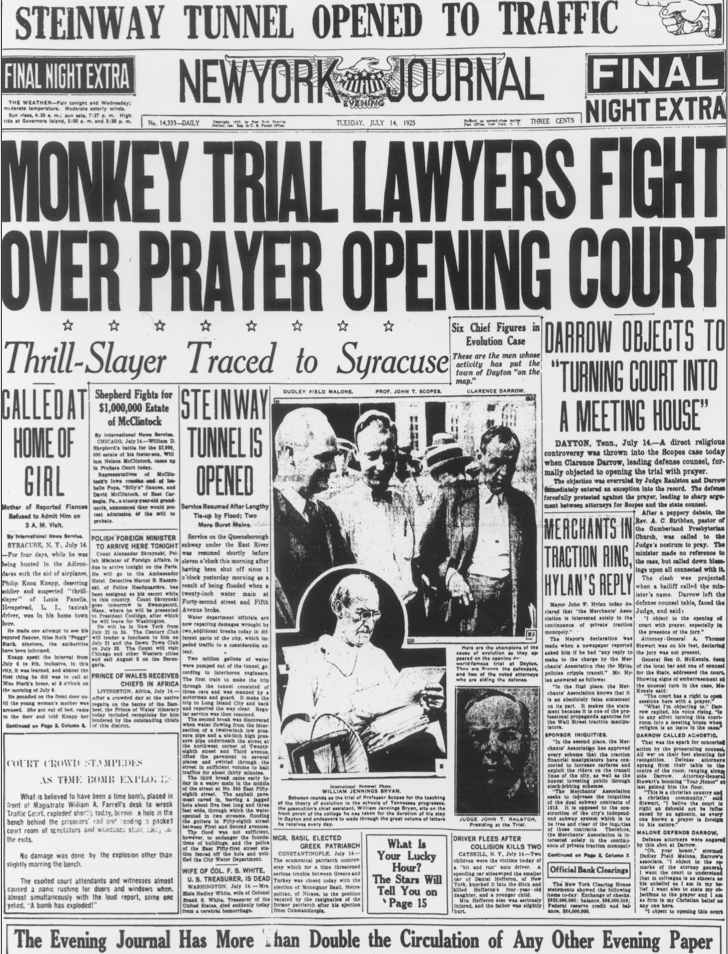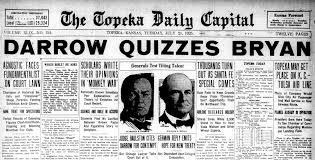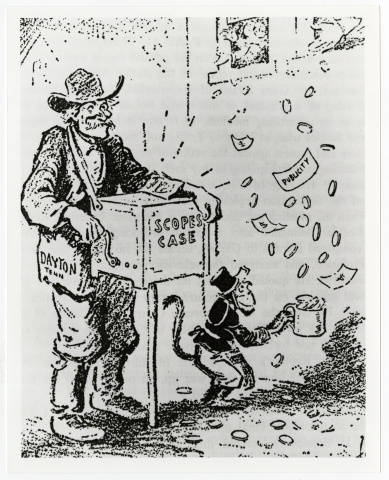
Sixty-six years after The Origin of Species was published, the debate over evolution reached Tennessee but would expand to involve the entire country. In January 1925, member of Tennessee House of Representatives John Butler introduced a bill that would make it unlawful for teachers to teach evolution. The bill passed the House and the Senate overwhelmingly and was signed by the Tennessean Governor on March 23.
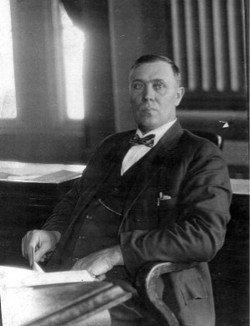
John Butler, 1925, Keep on Thinking
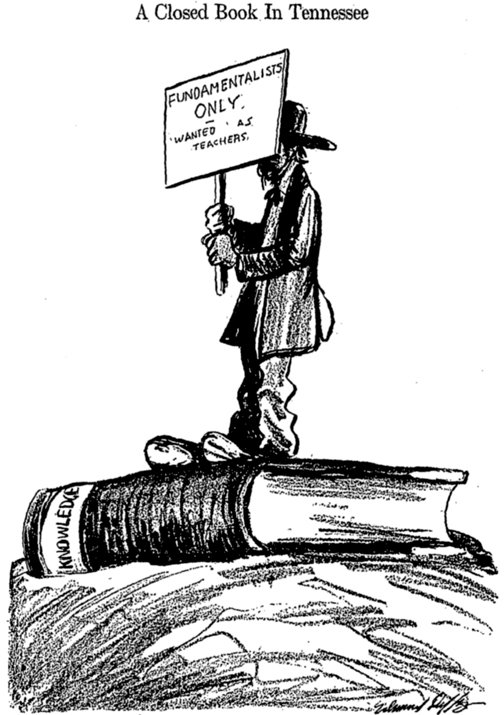
"Fundamentalists only wanted as teachers", 1925, Baltimore Sun
The Butler Act made it punishable by fine to:
"teach any theory that denies the story of the Divine Creation of man as taught in the Bible, and to teach instead that man has descended from a lower order of animals."
~ John Butler
In April 1925, an advertisement placed in the newspaper by the American Civil Liberties Union (ACLU) searching for people willing to challenge the Butler Act paved the way for the Scopes Trial to occur. A Dayton businessman saw this as an opportunity to boom his town, immediately searching for a teacher. John Scopes was selected and eventually arrested on May 7, 1925 for violating Tennessee’s anti-evolution law. William Jennings Bryan, an anti-evolution activist, volunteered to assist in Scopes’ prosecution while Clarence Darrow, an agnostic lawyer, acted as the defense. The trial drew intense publicity as thousands of people and hundreds of reporters and photographers flocked to Dayton, crowding its streets bordered with stands selling toy monkeys and creating a circus-like atmosphere. Cable relayed the events across America and even to Europe. The trial and its two renowned attorneys took the world by storm as people scrambled to witness and record its events in political cartoons and articles.
"I knew that sooner or later someone would have to stand up for the stifling of freedom that the anti-evolution act represented." ~ John Scopes
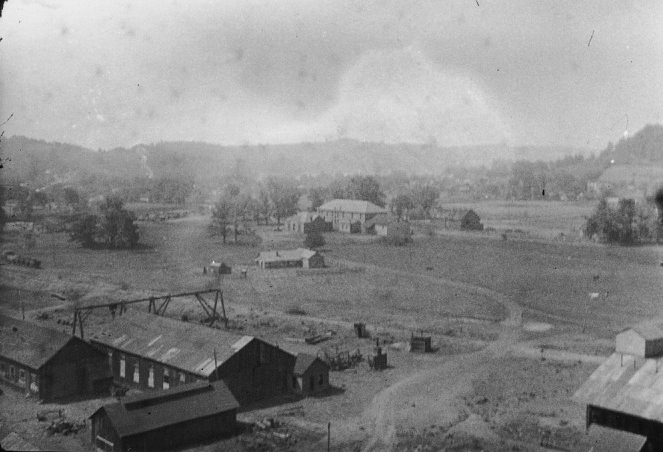
Dayton, 1925, Smithsonian Archives
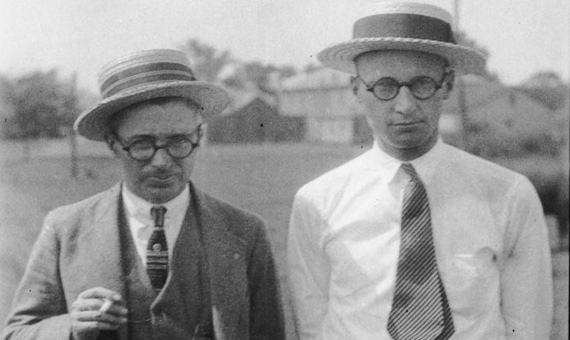
Dayton Businessman, Rappleyea, and Scopes, 1925, Smithsonian Archives
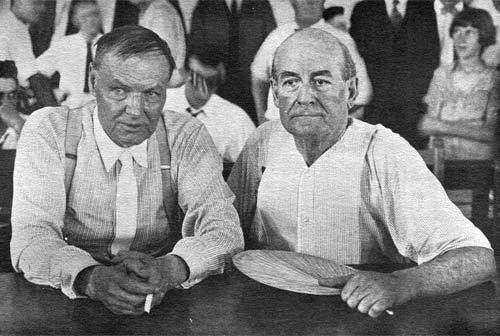
Darrow and Bryan, 1925, Pew Research Center
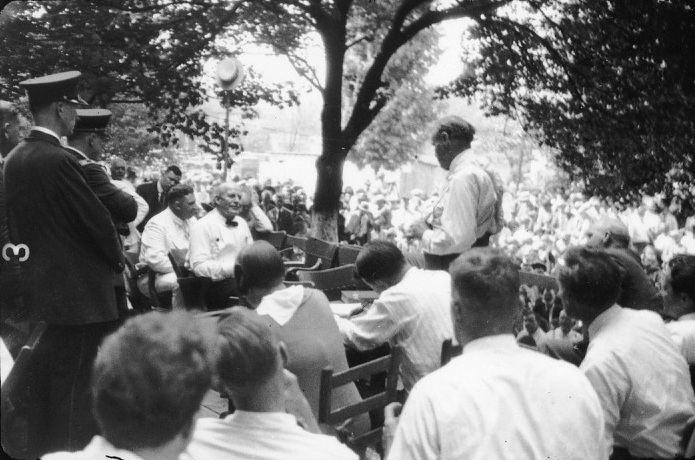
Outdoor Trial, 1925, Smithsonian Archives
"As the primary news medium in 1925, newspapers offered Americans daily descriptions and analyses of the trial’s proceedings. At the time, sociologist Howard W. Odum estimated that 2,310 daily newspapers and 13,267 weeklies reported on the trial and printed 'words in the aggregate amounting to three thousand volumes of three hundred ordinary pages each.' "
~ Julie A. Scott
Footage of the Scopes Trial, 1925, YouTube
The trial became more about modernism versus fundamentalism than John Scopes, and so Darrow and Bryan argued their cases intensely by attacking each other and using stories from the Bible, and if the jury allowed it, there would have also been testimonies from scientific experts. Darrow used the trial to enlighten America on evolution, and Bryan focused on shedding light on the fears of Darwinism. Bryan even came to the stand as a biblical expert, where he was examined on whether or not the Bible should be interpreted literally. The questioning got heated, so Bryan’s testimony was expunged from the record, but this infamous exchange was key in communicating the main arguments for fundamentalists and modernists.
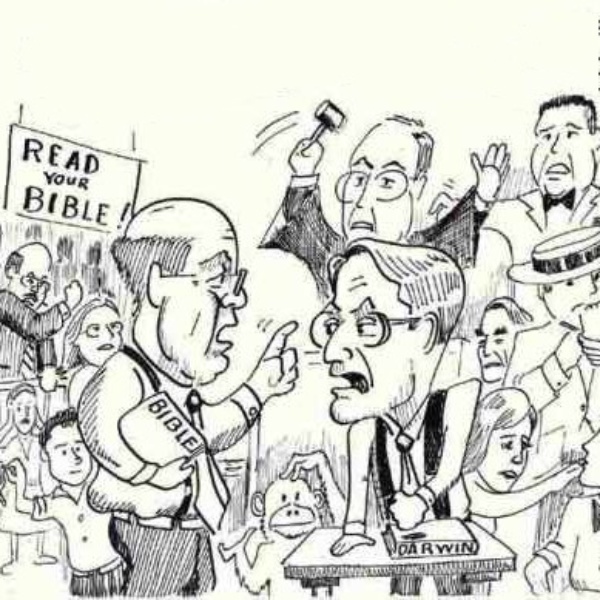
Cartoon showing the heated trial, 1925, Record Online Darrow examining Bryan, 1925, Library of Congress
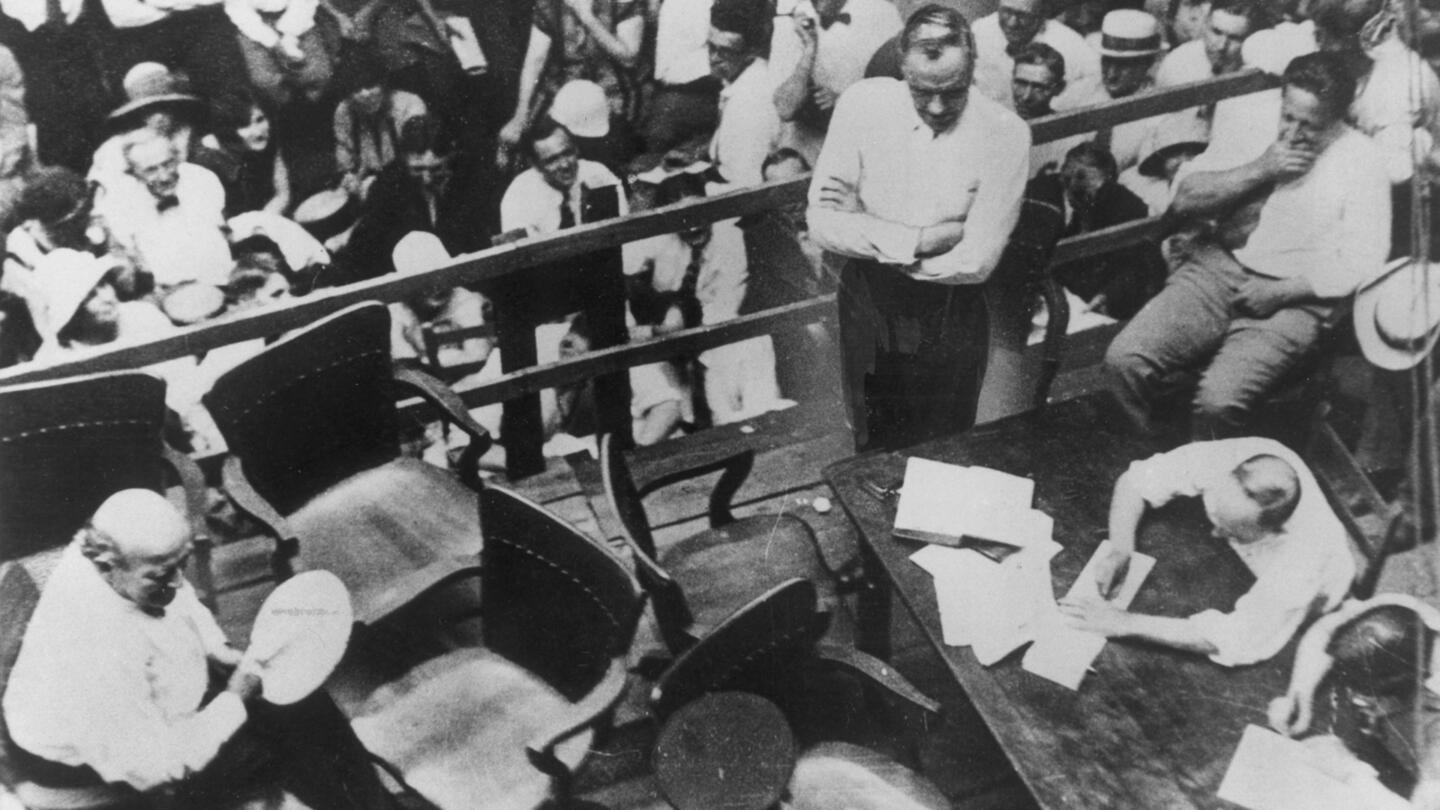
"This was a battle for the hearts and minds of the public. Not so much the public in Dayton, Tennessee, but the larger public all over the country that was following this very closely."
~ Nadine Strossen
